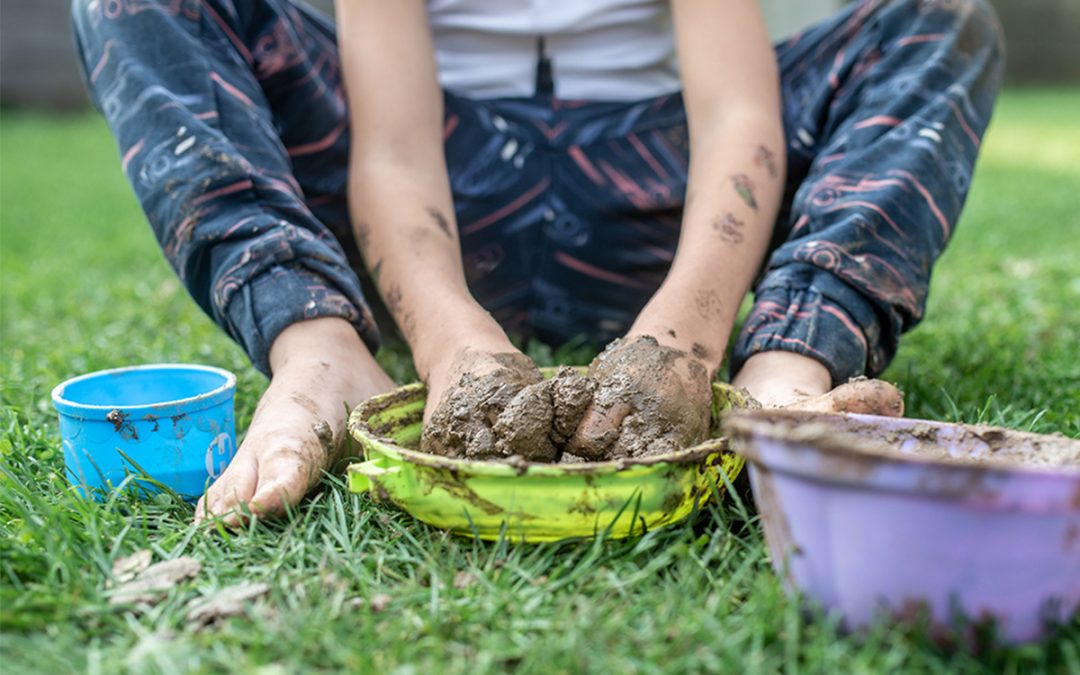What is Sensory Processing Disorder?
People process sensory information in many different ways. Some people experience sensory processing issues, where the brain has trouble organising and responding to information that comes in through the senses. This can result in oversensitivity, undersensitivity, or a combination of both.
Oversensitivity in a child will lead them to avoid sensory input, known as sensory avoiding and it occurs because their senses are too overwhelming for them.
In much the same way, undersensitivity in a child will lead them to actively seek out more sensory information, known as sensory seeking and it occurs because their senses are underwhelming/not stimulating enough for them.
The Types and Combinations of Sensory Processing Disorder
Sensory Processing Disorder is not recognised as a specific learning difficulty in the UK so there is generally a lack of awareness of it. Therefore, identifying/recognising sensory issues in children can actually be very difficult. More often than not, the parents of a child are most likely to identify possible sensory issues in their child; based on their behaviour and preferences, compared to their siblings, friends or other children they interact with perhaps at nursery or school.
Hypersensitivity
Hypersensitivity occurs in a person/a child when their senses are too much for them. Indicators of Hypersensitivity are:
- Crying.
- Overly sensitive to temperature including air, food, water or objects.
- Don’t like walking on certain types of surfaces barefoot – for example sand or grass.
- Withdrawing when touched.
- They hate messy play – for example playdough, sand.
- Dislikes having hair or face washed.
- They refuse to eat foods of different textures – for example mashed Vs. whole foods.
- Excessively ticklish.
- Dislike of brushing their teeth.
- Annoyance ti clothing seams or clothing textures.
- Dislike of certain smells.
- Overreactions to accidental or surprising light touches from others.
- Dislike of loud noises.
- Avoids affectionate touch such as hugs.
- Poor balance, clumsy, overly cautious when walking.
Hyposensitivity
Hyposensitivity is the complete opposite to Hypersensitivity. Hyposensitivity occurs in a person/ a child when they seek more/further stimulation that they can sense. Indicators of Hyposensitivity are:
- Can’t stop moving.
- Seeks out tactile sensory input.
- Enjoys running around, crashing into things, falling over.
- Bumps into others.
- Enjoys being upside down.
- Stuffs food in mouth.
- Enjoys spinning around.
- Doesn’t notice a runny nose, messy face, or messy hands.
- Needs to touch everything.
- Craves touch.
- Seeks out messy play experiences.
- Unintentionally rough on siblings, other children, or pets.
- They tend to chew on anything they are able to – for example pens, shirts.
Hypersensitivity & Hyposensitivity Combined
Some people can be both hyposensitive and hypersensitive. A child may display a selection of indicators as shown in both of the above examples, but no two children will commonly show the same mix of indicators. A person can be both sensory seeking and sensory avoiding, simply meaning that they are oversensitive to some sensations and undersensative to others.
A child’s reactions can also change from one day to the next, or at different points throughout the day, depending on the environment and situation they are in. It is important to note that sensory processing issues aren’t classed as a specific learning disability in the UK but they can still have a huge impact on a child’s ability to learn. This is one of the key reasons why every child requires variety when it comes to their learning environment.
Do our children get enough time in the outdoors?
As a mother of three, I noticed differences in my youngest child Jake from an early age. This led me to find out more about sensory processing disorder and I quickly realised that Jake was displaying traits indicating both oversensitivity and undersensitivity.
School doesn’t provide Jake with much time to play outdoors or “heavy work” so when he is at home I try to encourage as much outdoor and physical play/heavy work as possible. A typical day at home for Jake involves digging in mud, smashing rocks or mud bombs with a hammer, lifting and carrying builders and bricks, moving tyres, as well as mud and sand play!
Identifying sensory processing issues in the classroom
Sensory overload occurs when there is too much information coming in through the senses for the brain to process. For children with sensory processing issues, this can lead to sensory meltdown. For example, yelling, crying, lashing out, running away or shutting down completely.
For children who are sensory seeking, this can lead them to other behaviours such as constantly touching objects, rough play, fidgeting, being easily distracted, invading other people’s personal space and being clumsy.
Sensory processing issues can also affect a child’s motor skills. We often think of the commonly known five senses: Sight, Sound, Smell, Taste, and Touch. However, sensory processing issues affect other lesser known senses too.
Introception is a lesser-known sense that helps you understand and feel what’s going on in your body. For my son Jake, that is not always feeling when his stomach is full, not feeling cold or heat, not knowing when he needs the toilet and having unexpected responses to pain.
Proprioception (or body awareness) is another lesser-known sense that for example, when you raise your hand you know that your arm is over your head. This is something most people don’t have to think about or check in the mirror. Children with poor proprioception may think their arm is above their head when it’s actually straight out infront of them.
Vestibular sense (spatial awareness and balance – knowing where your body is in relation to space). The Vestibular system includes the parts of the inner ear and brain that help control balance, eye movement and spatial orientation. This system helps keep you stable and upright. Children with vestibular issues may not know where their body is in relation to the space around them. This can result in making them feel off-balance and out of control.
Children who have processing issues with these types of senses are at risk of struggling with motor skills in a number of ways:
- They may seem awkward or clumsy. This could be indicated by slow movement and avoidance of activities that seem too challenging.
- They may not know their own strength. This could be indicated by ripping pages when trying to turn them or breaking a pencil point by writing too hard.
- They may not enjoy physical activities that other children find fun. This could be indicated by avoidance of swinging or being upside down which doesn’t give them the sensory input they need to feel secure.
- They may be in constant motion, bump into others and things, or seem out of control. This could be indicated by kicking their legs under their desks, knocking into walls as they walk along the corridors, as all of this type of sensory seeking gives them more sensory input than they are getting.
Schools play an important role in providing a blended learning approach for children (summary)
Children with sensory processing issues require sensory input to feel in control of their body. When a child gets this information, it helps them to feel more stable and focussed.
Children require space to move, play, learn and grow. Outdoor play and learning provides the opportunity for exactly that. Keeping children seated for long periods of time is not good for their development, nor is the non-calming classroom environment, full of colours, plastic, busy walls, noises, and closed in with lots of other children.
According to a study by Angela Hanscom, Occupational Therapist and Founder of Timbernook, there is an alarming rise in sensory and motor issues in children today.
“Children are showing decreased attention, fidgeting, decreased strength, poor posture (not enough core strength due to sitting/ screen time, etc.),falling (spatial awareness is off). Increased aggression (grabbing with more force, hitting harder when playing tag, etc.), rise in anxiety (and depression), not playing (less imaginary play), among others…”
- Many adults reported being outdoors 4-6 hours a day during their childhood.
- Research shows kids today spend only 48 minutes playing outdoors each day.
- Research shows kids today sit for an average of 9 hours per day in a seat.
When children are outdoors, multiple senses become engaged. Multiple synapses are firing at once in the brain and so the chances for sensory integration and organisation are likely to be higher. Unlike the classroom, the outdoors has a calming effect which is ideal for sensory integration in a child.
Getting children out of the classroom in the outdoors to learn and play is an important element to combating the rise in sensory issues in children across Scotland. Schools can introduce more curriculum that can be delivered and enjoyed in outdoor spaces. The introduction of, or of more, “heavy work” can also allow children to calm themselves and regulate their behaviour and emotions, which in turn helps them to be more open to learning and socialising. Some examples of “heavy work” activities include: push-ups, hopping, climbing, sliding, rolling, spinning, jumping jacks and swinging.
Urban Green Design is passionate about assisting schools across the country better utilise their outdoor spaces and encourage more outdoor learning and play for all children.
If you would like to find out more about making changes to your outdoor space, or would like to book a half/full day visit with me, Pauline, please don’t hesitate to get in touch on 01346 571533 or at pauline@urbangreendesign.org.
References/ Further Research
Angela Hanscom, 2019, The Decline of Outdoor Playand the Rise in Sensory Issues, https://urbangreendesign.org/wp-content/uploads/2020/10/The-Decline-of-Outdoor-Play-and-the-Rise-in-Sensory-Issues-1.pdf
Colleen Beck, 2020, Sensory Processing Disorder Checklist, The OT Toolbox, Accessed Thursday 8 October 2020, https://www.theottoolbox.com/sensory-processing-disorder-checklist/
Living with Eve, 2019, Sensory Processing Disorder: How To Recognize, Understand, and Deal with in Kids What is SPD Anyway?, accessed Sunday 4 October 2020, <https://www.youtube.com/watch?v=-BmFjCwwf-s

